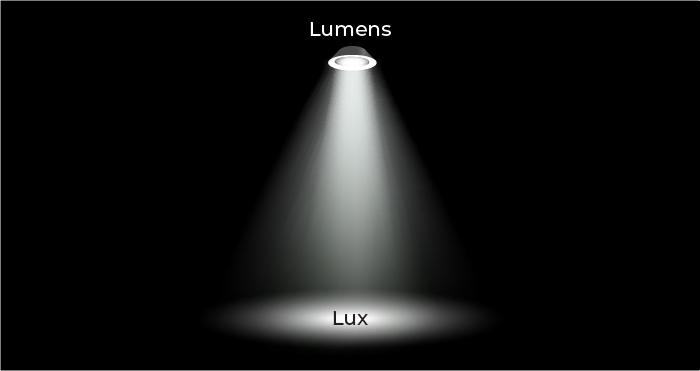The difference between lumens and lux

If you’re looking to understand and measure a luminaire’s brightness, it’s easy to get tripped up between two commonly used yardsticks – lux and lumens. Both are related to brightness but measure slightly different things.
Lumens
Most commonly associated with luminaires, lumens are the measure of the total amount of light, in all directions, emitted from a source. Denoted by the lm symbol it is calculated by multiplying luminous flux (the total perceived energy) by the luminous efficacy (how well a light source produces visible light).
Rule of thumb, the higher the lumen output, the brighter the light source, but this is not always the case. It is how ‘we of the electrical industry’, test and compare our products, which only tells part of the story.
Lux
The other half is lux – which takes into account the area on which the light will fall. Using the SI unit, lux measures how bright an area will appear, taking into account the initial amount of lumens, angle of the beam and distance from the source.
So, in a nutshell, lumens measure how bright something appears, and lux tells us how bright it actually is. Simples!
Stay up to date. Join our mailing list




